Хаас за Унгария
Ромен Грожан:
We’re halfway through the season and halfway through Haas F1 Team’s sophomore year. Can you provide an assessment of what the team has achieved so far and what you’d like to accomplish the rest of the year?
It’s never easy to look back when you’re in the middle of a season at what we’ve achieved. I think the results are speaking for themselves. We’ve already scored as many points as we did in our first season and we’ve been very competitive at a lot of different tracks. We’ve been in Q3 a bunch of times. It’s a big step from last year, but there’s still more that we want to do. As Gene (Haas) would say, there’s no bad team in Formula One. It’s just a constant fight to get better than the others.
We go from Silverstone – one of the fastest and most flowing circuits in Formula One – to the Hungaroring, which is one of the slowest circuits and also very technical. Does it take a few laps to forget about what you felt in the car at Silverstone, or are you able to just jump into the car and immediately get up to speed, despite the Hungaroring’s drastically different layout?
You do get back in the car and find the pace straight away. I’ve been competing in Formula One for a few seasons and I know all the circuits and all the characteristics of each layout. It’s not a big deal. I jump in the car and find my rhythm. From there, you can start a good weekend.
While the Hungaroring is known as a slower racetrack because of its tight layout, is that set to change this year because of the speeds you’re able to achieve with these faster, current-generation cars?
Yes, probably. It could be a pretty big change from the past. Sector two is going to be flowing and flying. The last two corners are going to be much faster than they were before. I believe the layout, and the way the race will play out will be different. Saying that, overtaking could be a bit of a tough one.
Will the faster speeds change how you attack certain portions of the Hungaroring?
You always have to forget what you’re used to from previous years. Now everything is different and the cars are much faster. So yes, you do change your approach. Having done 10 races with the 2017 car, we know where the limits are.
The Hungaroring is a tight circuit with a lot of corners, which means a lot of braking. You tried new Brembo brakes in practice and new Carbon Industrie (CI) brakes in qualifying and the race at Silverstone. Did it provide the comparison you were looking for?
Honestly, yes. It’s never easy to change brakes on a race weekend because it changes much more than just the brakes with things like mapping and adjusting the setup. I think we got some good results from the CI package. Whatever we were running with Brembo – with the right spec and the right temperatures it wasn’t too bad.
You ran Carbon Industrie brakes in the British Grand Prix while your teammate ran Brembo brakes. What’s next in terms of the brake package we’ll see used at the Hungaroring?
It’ll be very dependent on cooling. When we’ve got the latest from Brembo, I’m happy with them. But if we can run the CIs, I’m probably going to stick with them.
What’s the feel you need to have in your brakes to have the confidence to really push the car?
There are a few things. When you hit the pedal you really want to feel the bite of the brakes. You want the car to slow down immediately. Then there’s the motivation through to the end of the braking, where you want to be able to slow down, or not slow down the car, in the final bit, to get to the apex while managing the locking.
In five career Formula One starts at the Hungaroring you’ve finished in the top-10 three times, with a best finish of third in your first race there in 2012. What makes it such a good track for you?
It’s difficult to explain. I’ve always had a good feeling in Hungary. I’ve always liked the track. It used to be very bumpy, but they resurfaced it last year. It’s a low-speed circuit. How the car handles is important. I’ve been lucky to have had cars that have performed well there over the years.
You’re constantly turning the wheel at the Hungaroring and with the slower speeds, very little air flows into the car. Combined with the normally high temperatures experienced in Budapest, how physically demanding is the Hungarian Grand Prix?
It can get very hot in Budapest. It’s not an easy race, but on the other hand, there’s not many high-speed corners on the track, so it’s more about keeping your focus and concentration all through the race. Regardless, we’re always keeping fit to prepare ourselves.
Before the start of the season, all the drivers pushed their fitness level up a few notches to be better prepared for the higher g-forces these current-generation cars would exert on the body. After 10 races, you’re pretty used to the toll these cars put on your body. But will your increased fitness level be noticeable at the Hungaroring, where it’s typically very hot, very little air flows into the car and you’re constantly working the steering wheel?
The Hungaroring is going to be warm, but that’s fine. I think the fitness level is more of a factor at high-speed circuits like Silverstone, Austria, Malaysia and Japan. Lower-speed circuits can be tougher, but the body is now used to it.
How difficult is it to overtake at the Hungaroring and where are the overtaking opportunities?
It’s very difficult to overtake at the Hungaroring. To be fair, I made one of the best overtakes of my life there in 2013, outside of turn four, on Felipe Massa. I got a drive-through penalty for that one for having four wheels off the track. That didn’t matter to me as it was one of my most beautiful overtaking moves ever.
What made the move so rewarding for you, even with the penalty?
Because it came at a corner where nobody is expecting you to overtake. It was an outside overtake on a high-speed corner. The penalty, I thought, was questionable, but I just enjoyed the move. It was a key time in the race for me to be able to try and win. I really had to push hard and I just really enjoyed that overtaking maneuver.
We’re halfway through the season. How has it been to find and keep a tire’s working range?
It’s something we need to get better at. Clearly, it’s very complicated and we haven’t got all the keys yet.
How important is finding the tire’s optimum performance at the Hungaroring in terms of performance but also tire management?
It’s key everywhere. You can be super-fast or you can be super-slow, depending if you’re in the window or not. You do need to work hard to get in the window. We look at all our options and what we’ve done in the past.
A lot of grip, a lot of braking and a lot of high-energy demands all conspire against tires at the Hungaroring. How do you manage the tires and get the most out of them?
It’s going to be our number one priority to get the tire to work for us and analyze the degradation, which can be high on some compounds. If we get the grip, we’ll get the lap time. Then we can do more pit stops and have more fun.
Do you have any milestones or moments from your junior career that you enjoyed at Hungaroring?
I’ve had some great races at the Hungaroring. I had my first pole position in GP2 there in 2008. I had some good races after that in GP2. I also qualified on the front row of the Hungarian Grand Prix back in 2012.
What is your favorite part the Hungaroring and why?
I like sector two, the flowing section of the track, which is quite nice.
Describe a lap around the Hungaroring.
Straight line to start before big braking into the first hairpin. Turn two is a very tricky corner – a long left-hand side corner going downhill. It’s important to stay on the left from the exit for the throttle application to turn three. You want to be flat, and then high-speed turn four. Turn five is very bumpy – a long right-hand side corner, then you get to the chicane. After that there are some flowing corners which are really cool. Then you get to the last three corners. You need to brake big into the 90-degree, right-hand side turn, then the last two turns are the key. You finish with a long left corner, and then a very long right turn, where you really want to get going to get the lap done.
Кевин Магнусен: We’re halfway through the season and halfway through Haas F1 Team’s sophomore year. Can you provide an assessment of what the team has achieved so far and what you’d like to accomplish the rest of the year?
We’re halfway through and we’ve already scored the same amount of points as the team did all of last year, so I think it’s going well. We still have a lot to learn, and a lot to improve, but we are doing that. It’s just a process, and we’re doing well with that process.
We go from Silverstone – one of the fastest and most flowing circuits in Formula One – to the Hungaroring, which is one of the slowest circuits and also very technical. Does it take a few laps to forget about what you felt in the car at Silverstone, or are you able to just jump into the car and immediately get up to speed, despite the Hungaroring’s drastically different layout?
No, I think it’s pretty straightforward. You just go out, push and find your limits. Then you start working on the setup. There’s nothing from Silverstone that’s directly relatable.
While the Hungaroring is known as a slower racetrack because of its tight layout, is that set to change this year because of the speeds you’re able to achieve with these faster, current-generation cars?
As at any other circuit, it’s going to be faster than last year. On a slow circuit like Hungary, the difference to last year will be smaller than some of the faster circuits like Silverstone, where the difference was very big.
Will the faster speeds change how you attack certain portions of the Hungaroring?
Yes, it does. It changes your brake points. Certain corners are flat that weren’t flat last year. It’s a different way of driving.
The Hungaroring is a tight circuit with a lot of corners, which means a lot of braking. You tried new Carbon Industrie brakes in practice for the preceding British Grand Prix and ran Brembo brakes in qualifying and the race at Silverstone. Did it provide the comparison you were looking for?
What we’re looking for is just a consistent performance – something you can build your confidence around and find a rhythm.
You ran Brembo brakes in the British Grand Prix while your teammate ran Carbon Industrie brakes. What’s next in terms of the brake package we’ll see used at the Hungaroring?
We’re still working on it.
You’re constantly turning the wheel at the Hungaroring and with the slower speeds, very little air flows into the car. Combined with the normally high temperatures experienced in Budapest, how physically demanding is the Hungarian Grand Prix?
It’s a pretty tough circuit. There’s not many straights, so you’re constantly working because there’s always a corner. It’s a bit like a go-kart track. It’s a tough circuit because you never get a break, plus it’s hot.
Before the start of the season, all the drivers pushed their fitness level up a few notches to be better prepared for the higher g-forces these current-generation cars would exert on the body. After 10 races, you’re pretty used to the toll these cars put on your body. But will your increased fitness level be noticeable at the Hungaroring, where it’s typically very hot and you’re working hard inside the racecar?
I hope so. It’s why I’ve been working so hard on my training – to be ready for these kind of races.
How difficult is it to overtake at the Hungaroring and where are the overtaking opportunities?
It will be pretty difficult to overtake in Hungary. It’s probably going to be a little bit like Monaco.
How important is finding the tire’s optimum performance at the Hungaroring in terms of performance but also tire management?
Tire performance is key to a race weekend. Making the tires work is the most important thing in the car’s performance. It’s important to find the window.
Do you have any milestones or moments from your junior career that you enjoyed at Hungaroring?
I won races there in World Series by Renault. I’ve had some good races there.
What is your favorite part the Hungaroring and why?
I’d say turn four is a pretty cool corner as it’s high-speed – that and turn 11, the right-hander onto the backstraight.
Describe a lap around the Hungaroring.
It’s bumpy and twisty.
Гюнтер Щайнер: We’re halfway through the season and halfway through Haas F1 Team’s sophomore year. Can you provide an assessment of what the team has achieved so far and what you’d like to accomplish the rest of the year?
Overall, I think the team achieved what we promised to achieve – to be respectable and to get points. In the first year we ended up with 29 points over the whole season. Halfway through our second season, we are up to 29 points. We always try to do what we say we’re going to do, and the rest of the season we just want to continue like we did in the first half and, ultimately, try to better our position in the championship from last year.
The Hungaroring is a tight circuit with a lot of corners, which means a lot of braking. You tried new Brembo brakes and new Carbon Industrie brakes in the British Grand Prix at Silverstone. Did it provide the comparison you were looking for?
Yes, we did. We made one step toward understanding the new brakes. There is a second step because in Silverstone there is no hard braking – it’s one of the circuits where you use the brakes less than in all of the other circuits. Hungary is the opposite. You use the brakes quite a bit and you have no time to cool them down because there are no big straights. So, we continue our testing and see where we get in FP1 and FP2, and then decide what we are going to do for the race.
Grosjean ran Carbon Industrie brakes in the British Grand Prix while Magnussen ran Brembo brakes. What’s next in terms of the brake package we’ll see used at the Hungaroring?
We will only know that after FP1 and FP2 because we are in the phase of evaluating and testing brakes. It depends a little on the driver feeling. At Silverstone, Kevin preferred to stay with the Brembo brakes because he knew them better and he did not do FP1, so he was more comfortable with them. But again, I don’t know what will happen in Hungary until after FP1 and FP2.
We’re halfway through the season. How has it been to find and keep a tire’s working range?
Difficult. Everybody is working hard to get the tires to work. In some places, we get them in the window and they’re very good, but sometimes we are out of it. I think the biggest performance every team can get this year is to get the tire in the proper window where they work well.
How important is finding the tire’s optimum performance at the Hungaroring in terms of performance but also tire management?
It’s difficult at all circuits to find the performance or to ‘get them in the window’ like we say. The management is part of it. You only find out when you drive the car how much degradation there is, and from there on you manage the tires so that they stay in the window – that they last – and that the degradation is not too high. It is difficult everywhere and sometimes the heat helps, but sometimes it doesn’t help. We need to go there and see what we can do with them.
A lot of grip, a lot of braking and a lot of high-energy demands all conspire against tires at the Hungaroring. What do drivers need to do to manage the tires and get the most out of them?
You need to get your brake package in the right window so you’re not putting too much energy into the tires from the brakes, and the driver just needs to always see that he gets them in the window, especially in qualifying, so when you cross the finish line for your fast lap, you have the right temperature in them.
Antonio Giovinazzi will be in FP1 again for Haas F1 Team at Hungary. How was his performance in FP1 at Silverstone?
Antonio’s performance was good. He did what we asked him to do and his feedback was excellent. He has experience. He did two races and quite a bit of winter testing this year for Sauber, but he still surprised us with his feedback about what the car was doing. He’s very professional and he was fast, as well.
While having one of your regular drivers sit out an FP1 session isn’t ideal, how important is it to make that sacrifice so that future driving talent can gain valuable Formula One experience?
It’s not ideal, but it’s part of the game. We need to give young drivers the chance to get in an F1 car because it has proven very difficult with very little testing. As a team, we need to look out for the future drivers and that’s what we’re doing by putting Antonio in, and Kevin is very helpful in letting it happen.
With each FP1 session Giovinazzi partakes with Haas F1 Team, do you throw more at him each time to see how he responds, or do you continue with your program just as you would if Grosjean or Magnussen were in the car?
We do our normal program as we would with Kevin or Romain, because that is what we need to do on a weekend. The work is mainly around learning the tires for the weekend.
How well are the GP3 Series and Formula 2 Series preparing drivers for a possible Formula One future?
They are the right two series if you want to get to F1 because the cars are very good and they race on tracks where F1 is racing. So not only do the drivers learn the racetracks, but they’re around F1 people and learn the culture of it all. I think these are the two series that if somebody wants to get into Formula 1, they should be doing.
What kinds of adjustments do drivers coming from junior series need to make when they eventually drive a Formula One car?
I think with the new car it’s mainly physical with the higher g-forces, and then mentally it’s the amount of people they have to deal with when they get into F1. It’s amazing, the step you take between F2 and F1 – the complexity of the sport and cars. For young guys it’s quite brutal, and I think that’s as much to deal with as the physical aspects or the driving aspects because after doing GP3 and/or F2, you are well prepared to drive. It’s all of the surroundings that put you under stress, and they are more difficult to deal with than the driving.
The Hungarian Grand Prix marks the last race before the three-week summer shutdown. How valuable is that time for personnel to take off and hit a reset button before coming back to work with back-to-back grands prix in Belgium and Italy?
The shutdown is one of the best things F1 has done because people have something to look forward to in the middle of the season. Otherwise, it’s a never-ending drill. Everyone is putting the last little effort in before the summer shutdown, and then they go for two weeks and normally we all come back a little refreshed.
How much work needs to be done between the end of the Hungarian Grand Prix and the start of the summer shutdown so that your personnel is able to take well-deserved time off without any jobs being overlooked or falling through the cracks?
It would be like a two-week break between races because it’s four weeks. In theory, we take all of the parts off the car to be refurbished and then when we come back, we rebuild the car. There’s nothing exceptional that we do workwise on the cars before the shutdown.


















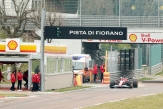
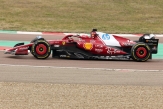
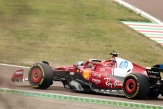

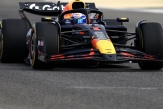
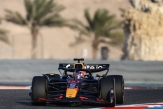
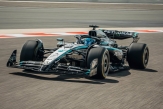
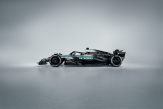
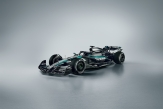
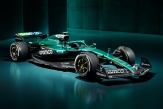
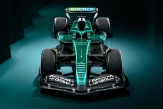
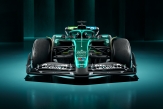
.jpg)
.jpg)
.jpg)
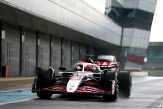
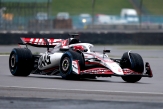
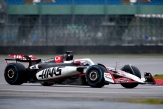
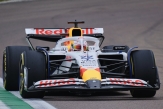
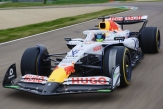
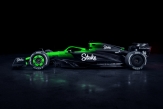
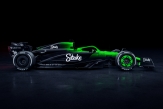

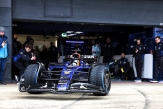
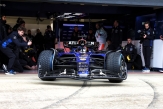
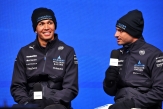

06/11/2025 от Огнян Тенчев (drJeckyll), няма коментари